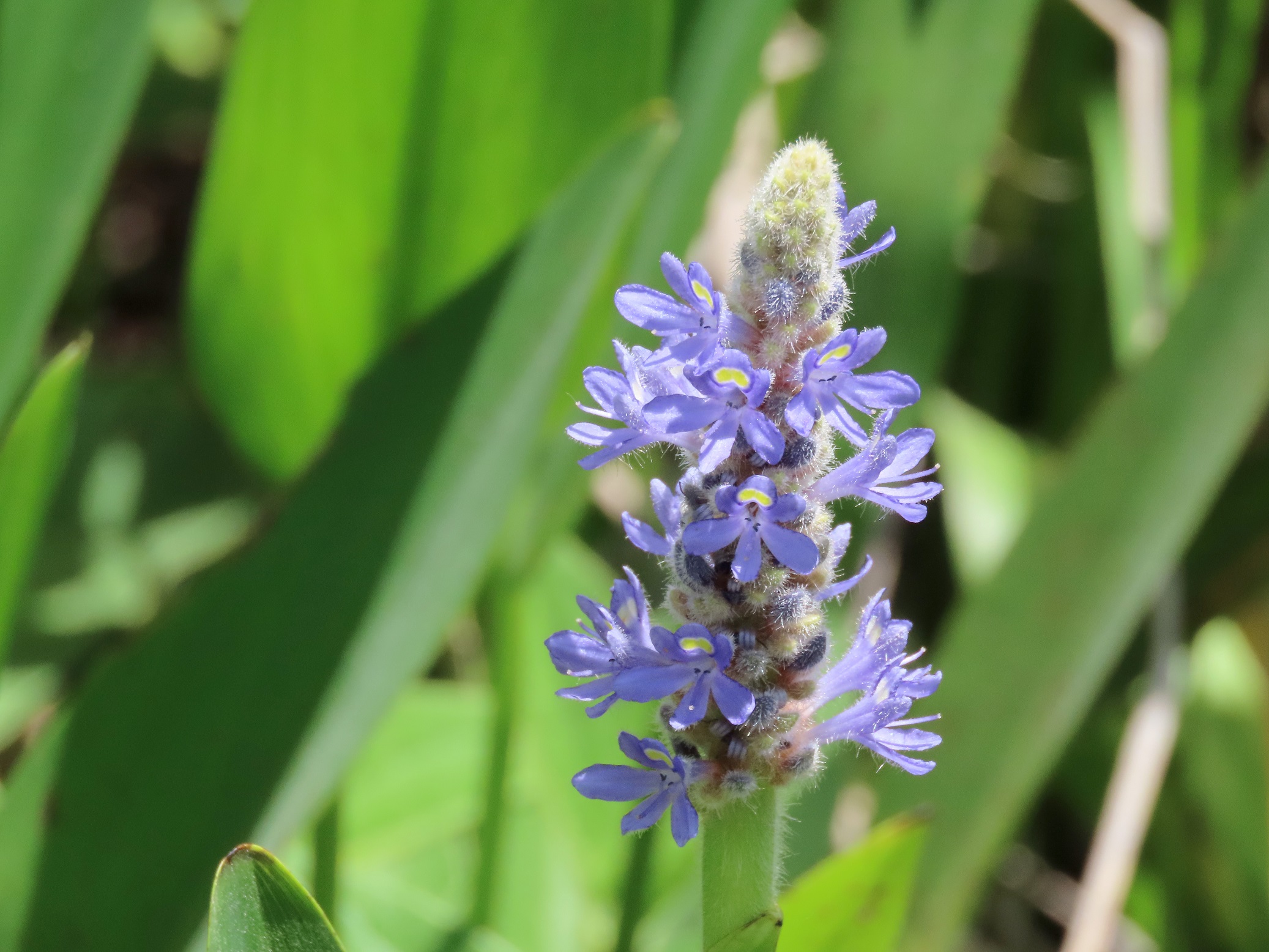
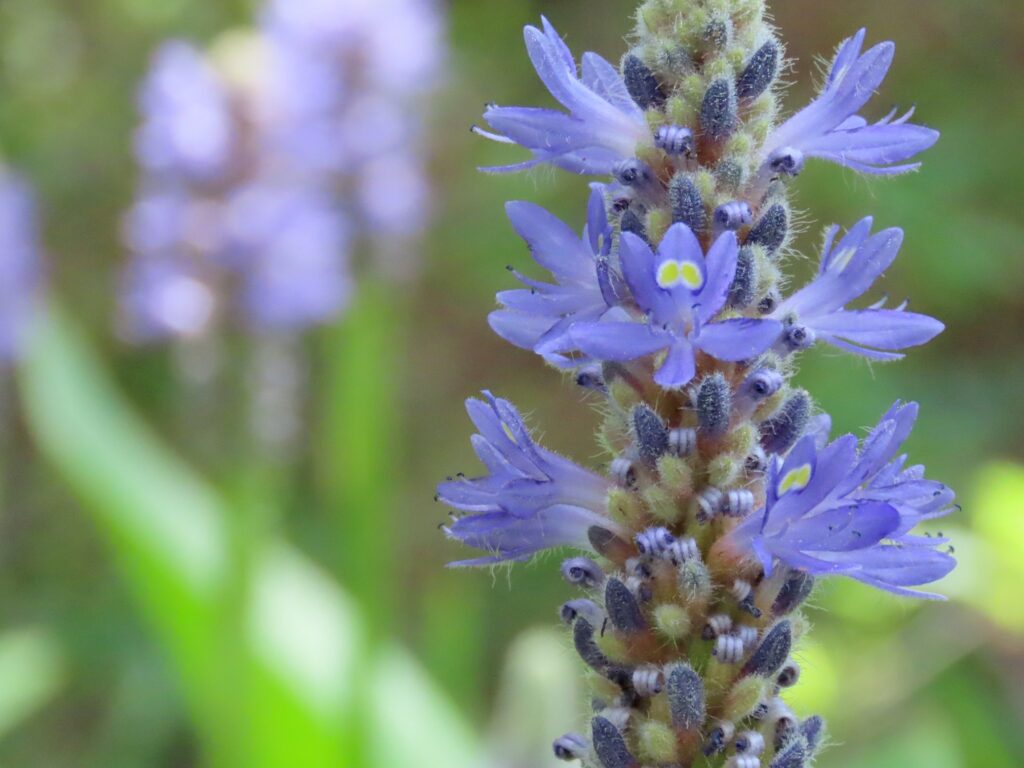
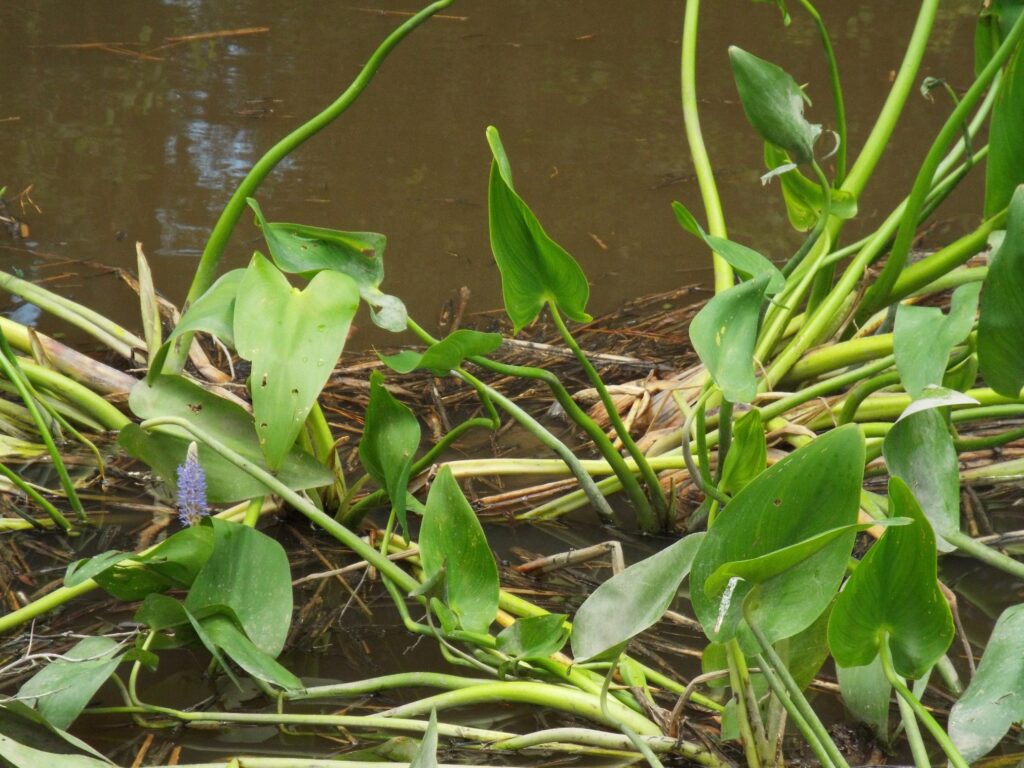
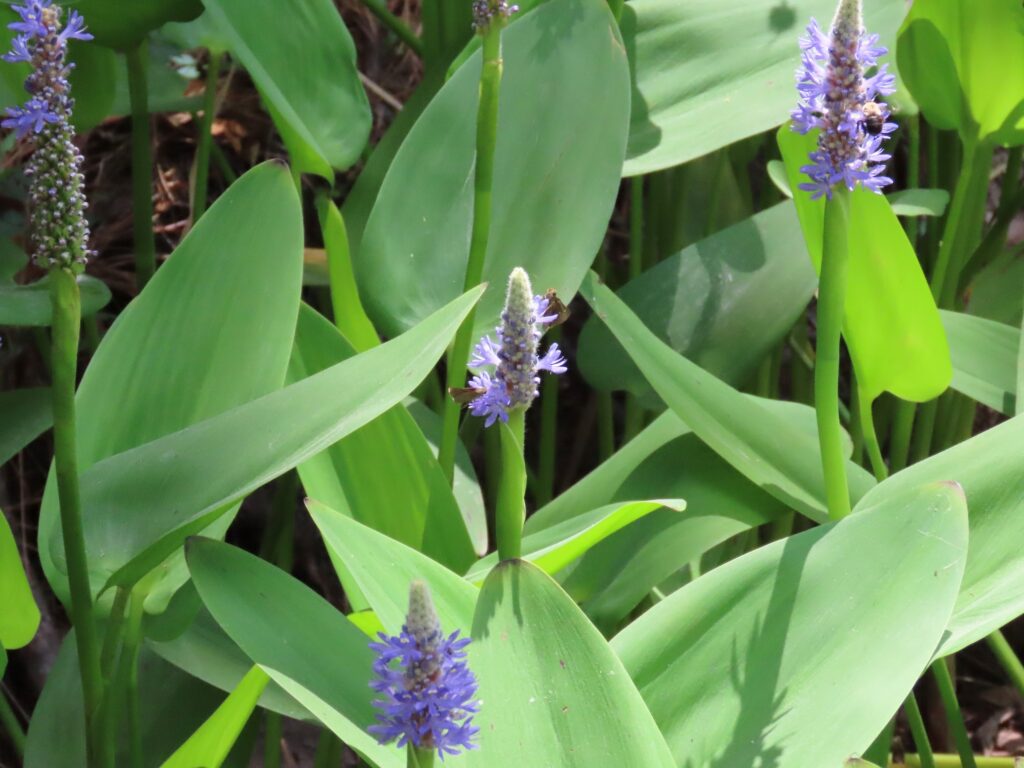
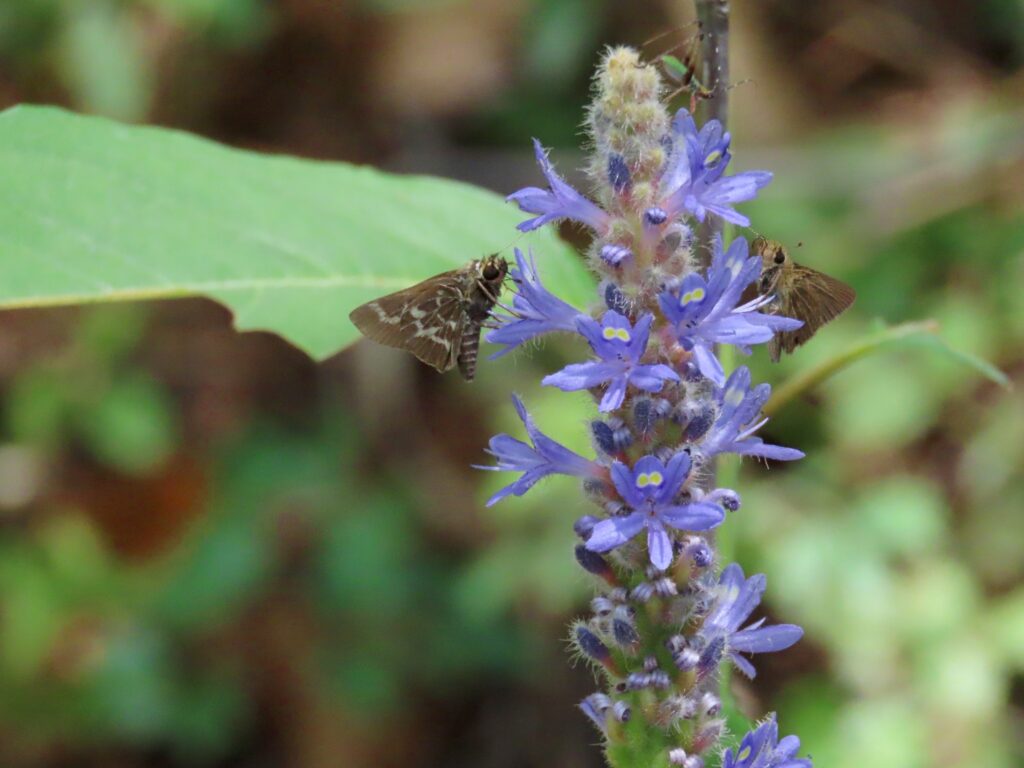
This week for Flora and Fauna Friday we have a lush lavender brush of aquatic wildflowers, Pickerelweed (Pontederia cordata).
Pickerelweed is a large perennial wetland wildflower. It’s found throughout the coastal plain, from Texas to Maine, and all along the Great Lakes. In the Lowcountry, it can be found in a wide array of freshwater wetlands, from ponds and ditches, to old rice fields and lakes, to rivers and bottomlands. Pickerelweed likes to inhabit the borders of these damp locales, where the soil is always wet but not always submerged, and so it has a particular affinity to ditches where everywhere is an edge. Pickerelweed spreads by its roots and will quickly fill up all the suitable habitat around it. The plant grows to about three-feet tall as a mass of large heart and spade-shaped leaves, each pointed upright on their own stem. Over the top of the leaves will rise the flower stalks, cupped beneath by their own individual leaf. The flower heads are hand-length spikes stacked with 6-petalled lavender flowers anointed with a drop of solar-yellow.
Pickerelweed is a long bloomer, with flowers appearing from as early as April and to as late as October. It is a tremendous nectar plant and a cornerstone in the diet of many wetland species of butterfly, bee, and fly. The plant also has some value as human forage. Young leaves can be boiled as a pot green and the seeds can be eaten raw or turned into flour. The plant gets its common name from the Pickerel, a genus of slender freshwater fish, which often occupy the same habitat on the edges of rivers and lakes.